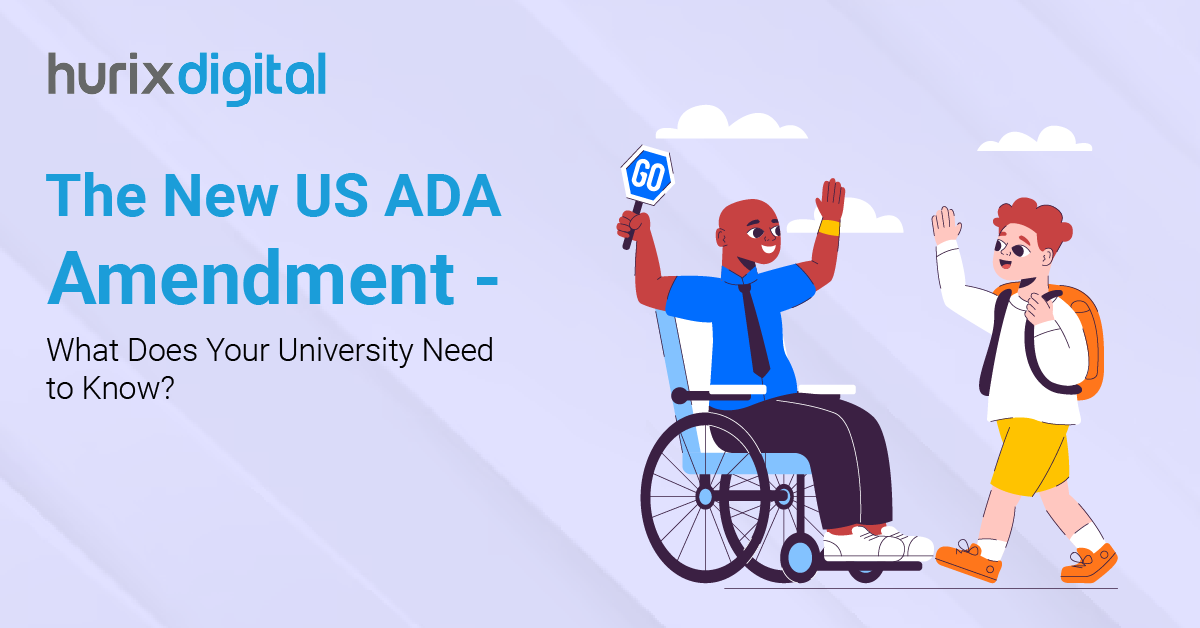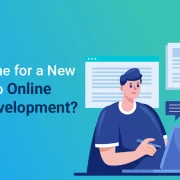
The New US ADA Title II Amendment – What Does Your University Need to Know?
Summary
The article examines the latest updates to the Americans with Disabilities Act, specifically under Title II. These amendments mandate that universities enhance web accessibility, and offer assistive technologies, comprehensive training, and professional advice to more effectively aid students with disabilities.
The Americans with Disabilities Act has been one of the most pioneering laws in establishing provisions for persons living with disabilities in this country. More recent updates to the ADA fall under Title II and are very specific to the educational field. At a university, keeping up with these changes is about more than just compliance; it’s about creating an inclusive learning experience.
This blog post takes a deep dive into the latest changes to the ADA and what they mean for your institution.
Table of Contents:
- Understanding the New ADA Title II Updates
- Key Changes in the ADA Title II Amendments
- The Impact on Universities
- Compliance and Legal Risks
- Enhancing Student Experience
- Implementing the Changes
- The Role of Hurix Digital in Supporting Accessibility
- Conclusion
Understanding the New ADA Title II Updates
The U.S. Department of Justice (DOJ) has extensively revised and updated Title II of the ADA in ways that are set to be quite impactful in enhancing access, especially in the digital space.
Some of the most critical updates include requirements around web accessibility, digital content, and the usage of assistive technologies. Knowing how these changes affect the landscape is essential for colleges and universities committed to providing an accessible, equitable educational experience to all students.
Also Read: How Do You Maintain Accessibility and Readability in the EPUB3 Conversion Service?
Key Changes in the ADA Title II Amendments
1. Website Accessibility
The new amendments have raised the focus on website accessibility. An accessible website enables users with impairments to access the screen-reading and other assistive technologies. That would mean conformity with Web Content Accessibility Guidelines (WCAG) 2.1, which gives a sturdy structure towards accessibility of digital content.
2. Digital Content
For example, this extends to making sure that all digital content made available by universities is accessible through alternative text for images, captions in videos, and ensuring that all navigational features can be read using any assistive technologies.
3. Assistive Technologies
Universities are now mandated to keep in mind that all assistive devices, screen readers, text-to-speech software, and other assistive tools for the differently abled are compatible with the digital platforms and digital content in universities.
4. Training and Awareness
Another salient issue, as mentioned in the amendments, is that they necessitate having continuous programs for training and awareness. There should be regular training on current best practices concerning access and assistive technologies for staff and faculty at universities. It serves to promote the right attitudes and helps make sure that everyone within the institution is in a position to help disabled students.
The Impact on Universities
These changes have many implications for higher education. First up, an audit of current digital assets and practices will be necessary to identify where improvements need to be made. A comprehensive plan in response to identified gaps in access will follow.
Compliance and Legal Risks
Legal action and substantial financial fines may result if the new ADA requirements are violated. Universities must understand that not only is this a legal requirement but also of moral character. The mission of a university is to present an educationally inclusive environment for all students, no matter their abilities.
Enhancing Student Experience
More importantly, though, the new amendments offer an opportunity for universities to begin developing their student experience beyond legal compliance. Accessible digital content and platforms will be supportive of not only students with disabilities but also greatly support usability for all students. For example, captions added to videos can help non-native speakers of English, and well-structured digital documents can help in better information retention for all students.
Implementing the Changes
Universities now must work on a strategic implementation of the ADA Amendments effectively. Here are some steps that may be considered:
1. Conduct an Accessibility Audit
Start with a full digital audit of all assets and platforms. Identify priority areas where WCAG 2.1 adherence isn’t met and get them fixed.
2. Make an Accessibility Plan
Develop a detailed plan that outlines the steps you’ll take to be compliant. This should include timelines, resource allocation, and specific goals in which improvements can be made for better accessibility.
3. Invest in Training
Conduct regular training sessions for staff and faculty on best practices for creating accessible content, especially the use of assistive technologies.
4. Collaborate with Accessibility Experts
Consider partnering with accessibility experts who can provide guidance and support throughout the compliance process. These experts can offer insights into the latest trends and technologies in accessibility, helping your university stay ahead of the curve.
5. Monitor and Evaluate
You should have an ongoing monitoring and evaluation procedure in place to ensure that your university remains in compliance with ADA requirements. Update your accessibility plan at regular intervals, based on feedback and new developments in the area of standards for accessibility.
The Role of Hurix Digital in Supporting Accessibility
As colleges and universities work through the implications of the new ADA amendments, they need to partner with experienced accessibility service providers. Hurix Digital provides a plethora of services aimed at ensuring that the educational sector complies with all the established standards in accessibility.
Our team of experts can help you with audits, training programs, and developing accessible digital content. At Hurix Digital, we appreciate the importance of an all-inclusive learning environment. We develop solutions that will be responsive to the diverse needs of universities in ensuring all students have an equal opportunity to learn. Working with us, your university can comfortably maneuver through the ADA amendments to get a partner in creating a more inclusive campus for everyone.
Also Read: 2024 Vision: ADA Web Accessibility Unleashed – What You Need to Know
Conclusion
As stated above, recent amendments to the ADA, under Title II, are a major step in terms of educational institution accessibility at large. Conscious implementation of changes at universities will be achieved not only for compliance purposes but also for the achievement of an inclusive learning environment. Universities can engage in proper audits, invest in training, and partner with experts in accessibility, such as Hurix Digital, to ensure they are fully prepared for the new requirements and stand ready to support all students in their academic journey.
Get in touch with us to know more!

Vice President – Digital Content Transformation. He is PMP, CSM, and CPACC certified and has 20+ years of experience in Project Management, Delivery Management, and managing the Offshore Development Centre (ODC).







